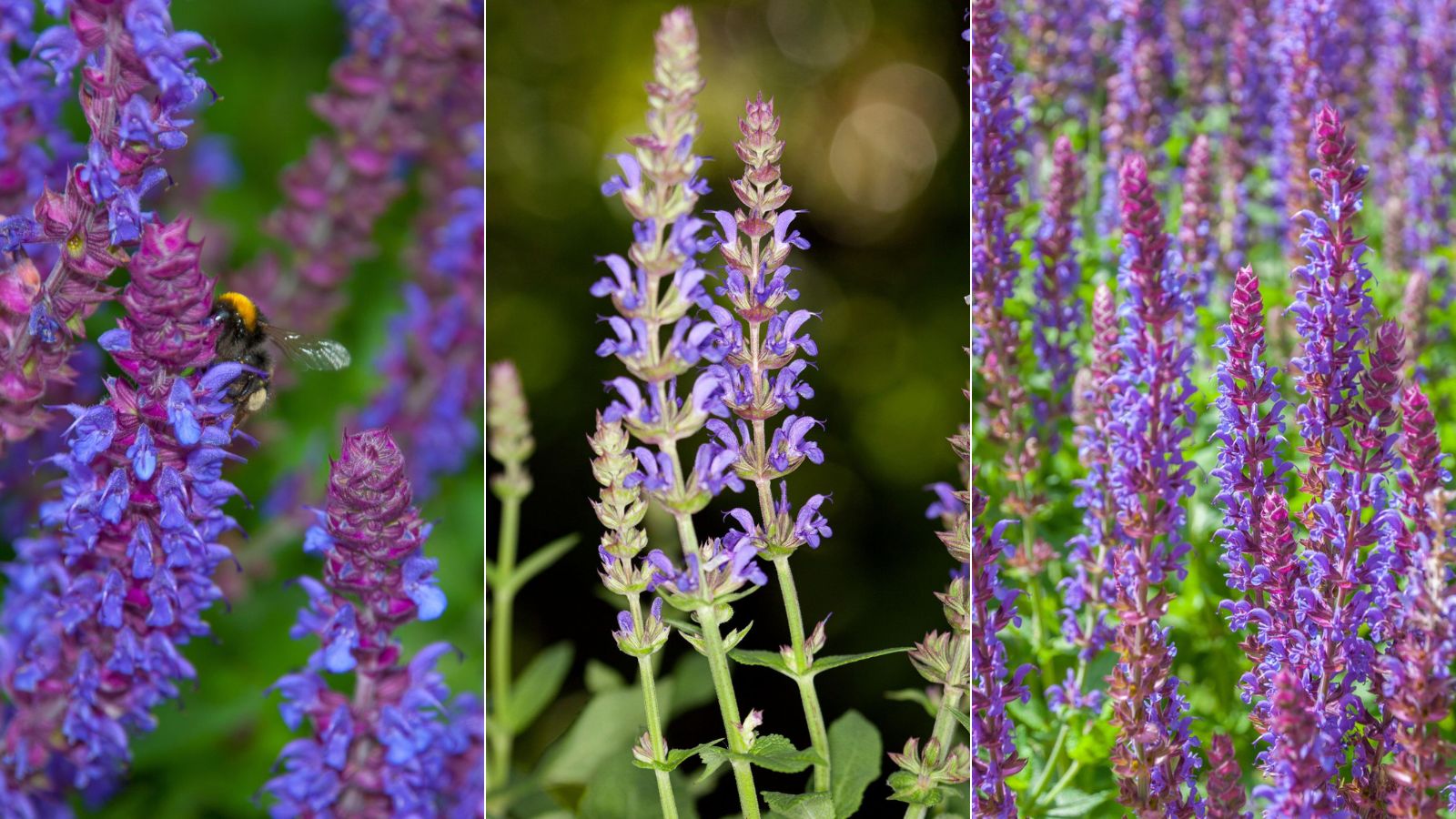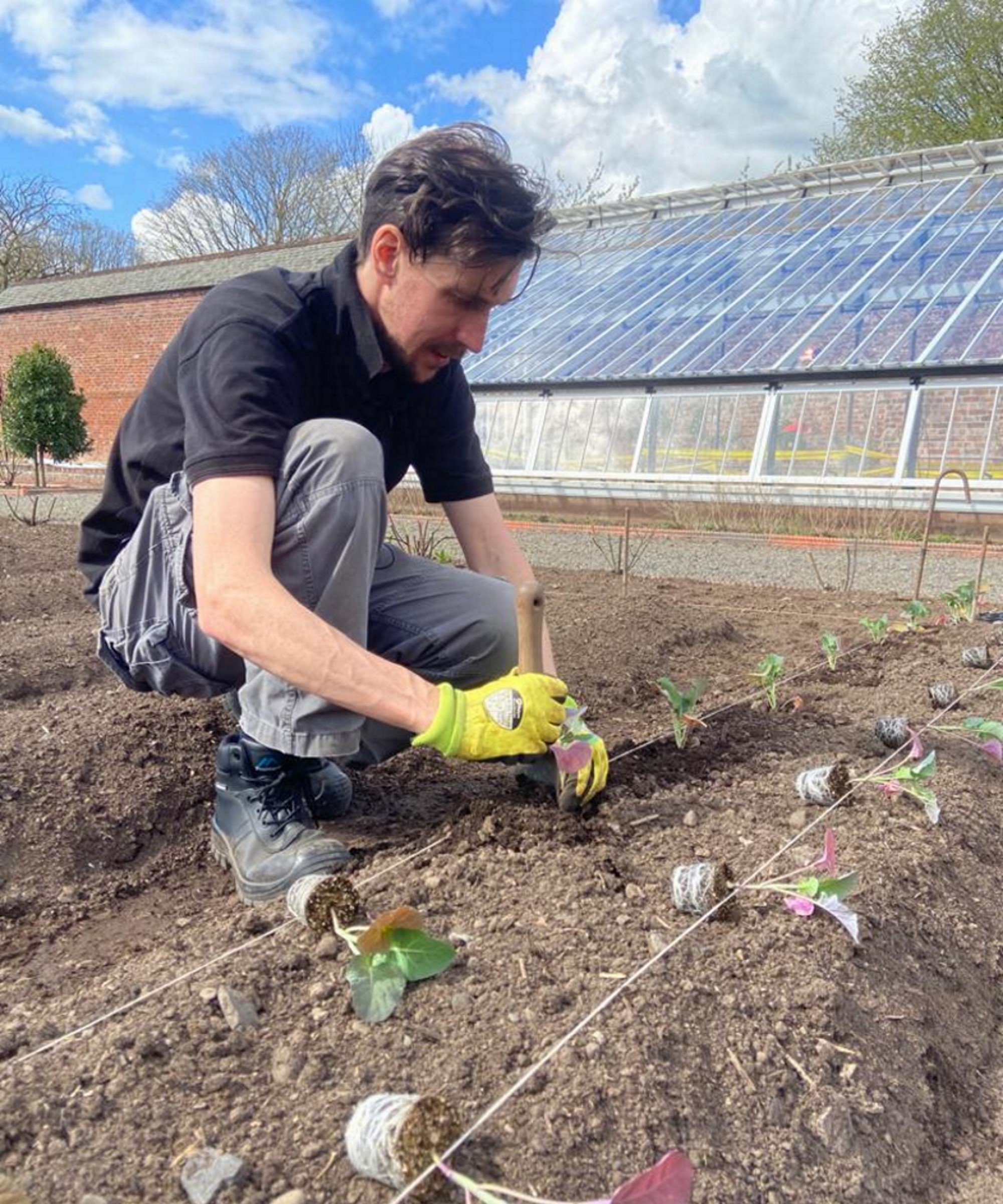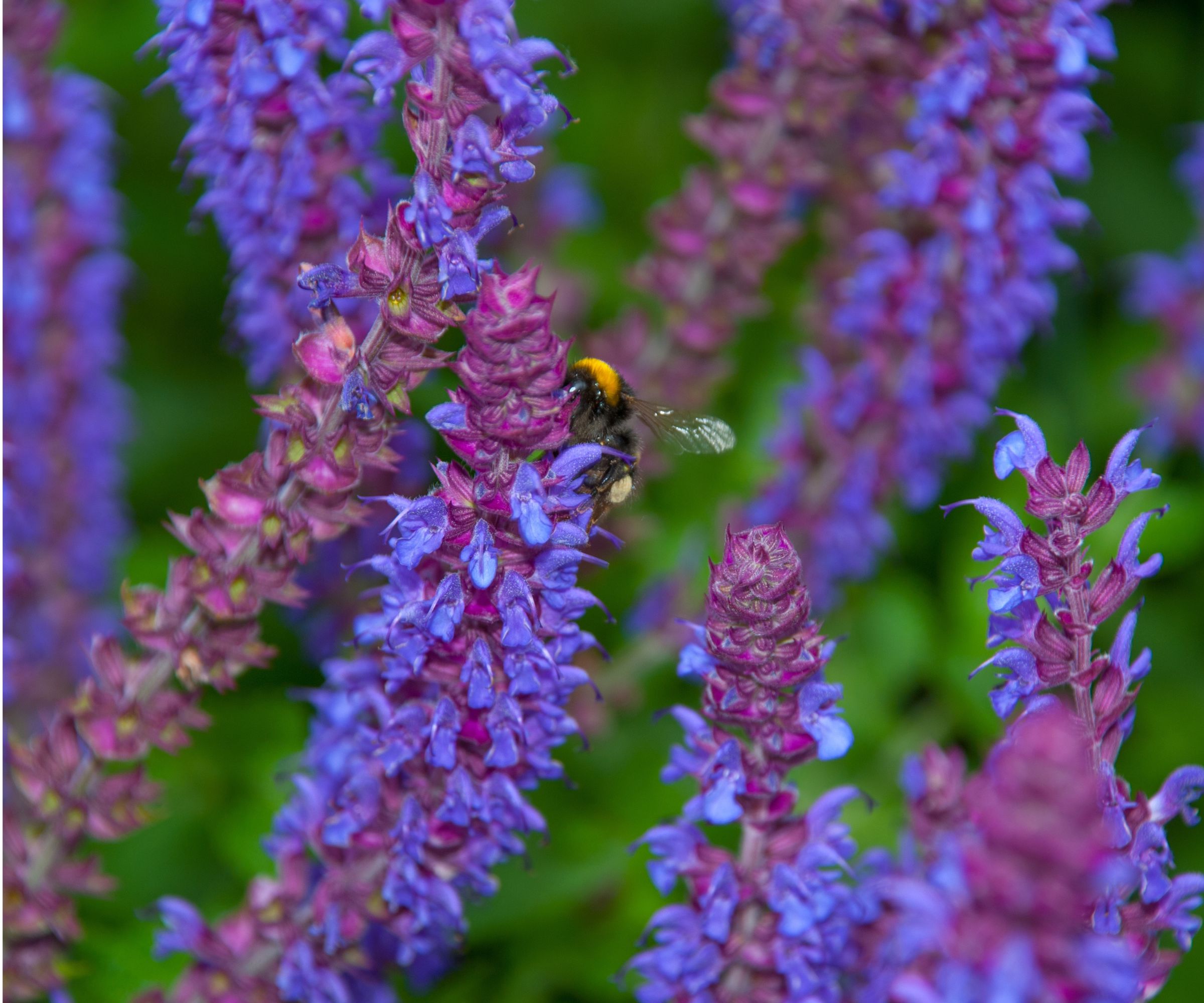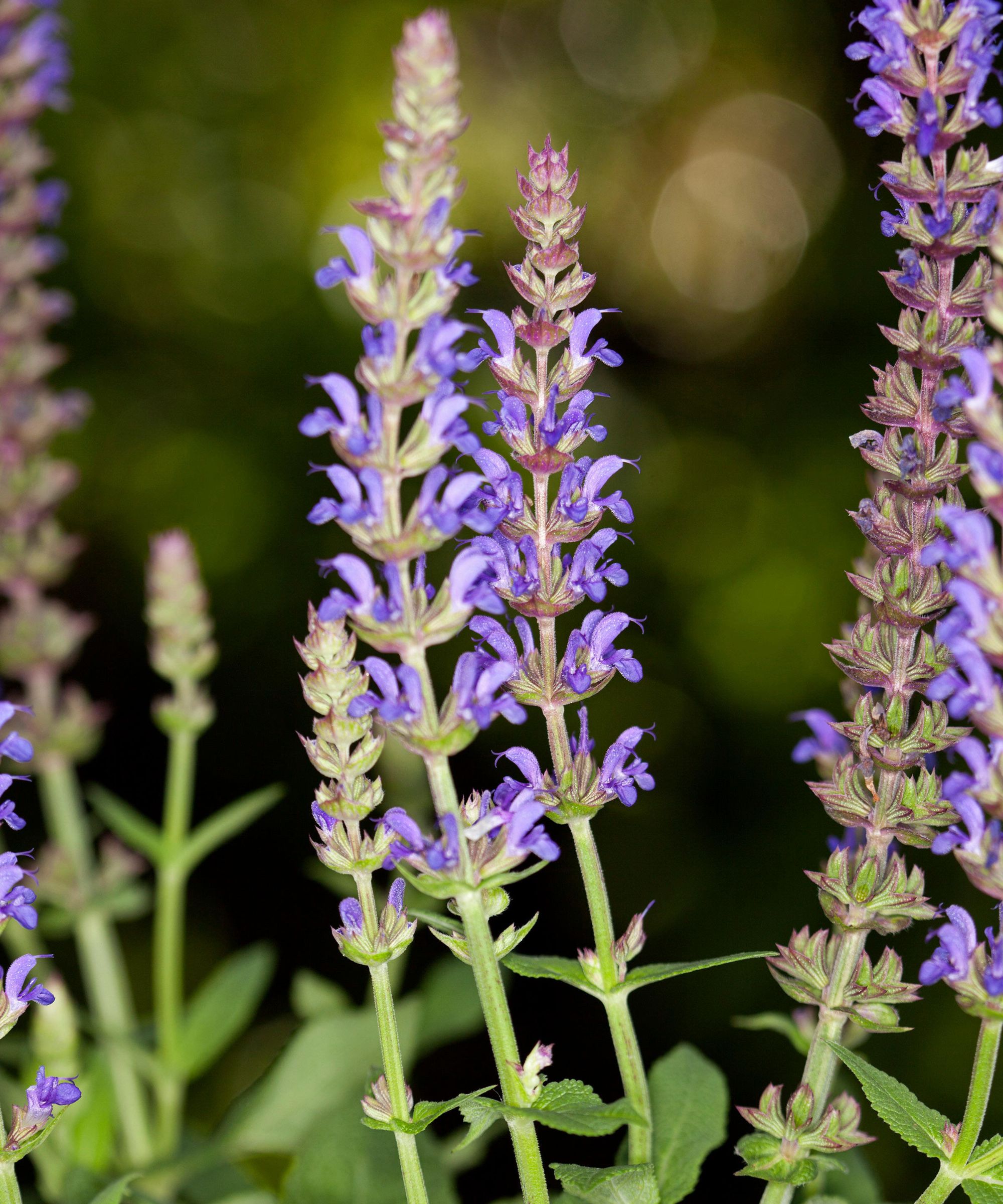Should I deadhead salvia? Expert answers for more blooms
Is it beneficial to deadhead salvia? Here, gardening experts share tips for ensuring you get the best show


Salvia offer swathes of beautiful, colorful blooms in summer, but should you be deadheading yours?
The answer, in brief, is that it's not vital to their survival, but doing so will promote healthy growth. So, if you are growing salvia, you will want to work this into your garden maintenance routine.
Below, we take you through the essentials of deadheading salvia through the summer, including how and when to tackle the task. We talk about pruning salvia to help the plants keep their overall shape in our separate article.
Why is deadheading salvia important?

Salvia aren't just pretty; they're great plants for pollinators, too.
Jacky Chou, Principal and Director at Archute explains why you should deadhead them.
'Deadheading salvia is not necessary for the plants' survival, but it can promote better blooming and overall plant vigor. Still, if you want continuous blooms and to prevent seed formation, deadheading is a recommended practice.'
Deadheading is the term for removing dead or dying flowers as the plant grow to encourage the plant to redirect its energy to stimulate the blooming new flowers.
David Cohen, plant expert and CEO of Badais International recommends, 'Deadheading salvia is generally beneficial for the plants' overall health and appearance. Deadheading salvia encourages the growth of new blooms, prolonging the flowering season. It also helps maintain a tidy and attractive appearance by removing spent flowers.'
Drew Swainston, gardening expert at Homes & Gardens agrees, 'Deadheading will not only reward you with more flowers, but it also neatens up the overall look of the plant.'
He adds, 'Removing the spent flower heads will encourage the plant to put out more flowers rather than focus the energy on producing seeds.'

Jacky Chou is the Principal and Director at Archute, an editorial magazine about architecture, home and garden. They have been referenced by The New York Times, Bustle, House & Home, Bloomberg, and Angi. Jacky also his own an online interior design company as well called Laurel & Wolf.

Drew qualified as a journalist before studying for a horticulture qualification, after which he worked as a professional gardener for several years, specializing in kitchen gardening. He's now bringing his expertise and passion to Homes & Gardens as a member of our team.
When to deadhead salvia?

David Cohen, the CEO of Badais International advises, 'The ideal time to deadhead salvia is after the initial flowering period when the blooms start to fade. This is usually in late spring or early summer. However, some varieties may have extended bloom periods, so it's best to observe the plant closely.'
In general, salvia will begin blooming around May or June and can continue to bloom throughout summer as long as you make sure to deadhead them when the time is right. If you neglect to deadhead them then the flowers will only bloom until the middle of summer.
Jacky Chou, Principal and Director at Archute continues, 'The ideal time to deadhead salvia is after the first flush of blooms has faded. So, as soon as the flowers start to wilt and lose their vibrant color, it's a good time to deadhead.'
When the flower stalks of your salvias are turning brown, it is time to give them the chop. If left alone, this brown discoloration will work upwards to the flower. When 70% of the bloom on a flowering spike has turned brown or faded then you need to start deadheading the plant.
You should try to be reasonably intuitive about how regularly to deadhead salvia. When you cut them often depends how fast the flowers grow. Once the flowers begin to look discolored and wilted then you should deadhead them. This could be as regularly as every few weeks. It is likely that you'll need to deadhead salvia possibly around two or three times a season.
Make sure you don't deadhead salvias too early, because their blooms will only last for a few weeks.
Once flowering season ends and new bloom production slows, let the flowers on your salvia reach their seed-producing phase before deadheading them, an important step if you're intending to collect seeds from them.
Although you can deadhead your salvia year-round, we don't recommend cutting them back in fall even if they look a bit sad; instead, wait until there are green shoots visible at the bottom of the plant in spring.
How to deadhead your salvia

The first step is getting hold of some sharp pruning shears, such as Fiskars Bypass Pruner Garden Tool available at Walmart, since using a blunt tool can damage the plant. Ensure your blades are clean (McKesson Isopropyl rubbing alcohol from Walmart is useful to have on hand to disinfect them garden tools to avoid disease or infection spreading to the plant via pathogens).
Be sure to cut where the stem and the highest set of leaves on the plant connect. David Cohen suggests, 'To deadhead salvia, locate the faded flowers just above the set of leaves or side shoot. Using sharp pruners or scissors, make a clean cut to remove the entire flower stem.'
Multiple salvia often grow together from a central stalk with two side shoots. From these clusters, only deadhead those with dead or fading flowers and blooms. If the entire stalk is turning brown or wilting then your may want to pull off the entire stalk in order to allow new ones to grow in its place.
Jacky Chou adds, 'If you have larger salvia, such as Salvia officinalis or Salvia guaranitica, it's more efficient to use the shearing method. After the main blooming period, shear the entire plant back to about one-third of its height. Make the cuts just above a set of healthy leaves or buds. This encourages fresh growth and potential reblooming later in the season.'
Once you deadhead your salvias this should encourage it to rebloom. The new stems that new blooms will come from should normally grow from the sides of the stems.
FAQs
What should you do once the salvia has been deadheaded?
Once the salvia has been deadheaded, water it to give it an extra boost. Now is also a good time to fertilize; Elixir Gardens high potassium liquid fertilizer available at Walmart will increase the chance of the salvia producing healthy blooms in future. This should also be done midsummer to encourage an additional bloom cycle.
Jacky Chou also suggests, 'Deadheading, along with good practices, can help keep your salvia plants looking healthy and blooming beautifully throughout the season. Remember to provide adequate care for your salvia, including regular watering, proper sunlight exposure, appropriate soil conditions.'
As Jacky Chou suggests, 'Deadheading is not mandatory for all salvia, as some varieties produce attractive seed heads that add visual interest to the garden or provide food for birds. Consider the specific variety of salvia you have and your preferences before deciding to deadhead.'
For more salvia information, consider our guide on why gardeners should grow salvia, or learn how to propagate salvia, for more striking perennials in your yard.
Sign up to the Homes & Gardens newsletter
Design expertise in your inbox – from inspiring decorating ideas and beautiful celebrity homes to practical gardening advice and shopping round-ups.

Lola Houlton is a news writer for Homes & Gardens. She has been writing content for Future PLC for the past six years, in particular Homes & Gardens, Real Homes and GardeningEtc. She writes on a broad range of subjects, including practical household advice, recipe articles, and product reviews, working closely with experts in their fields to cover everything from heating to home organization through to house plants. Lola is a graduate, who completed her degree in Psychology at the University of Sussex. She has also spent some time working at the BBC.
-
 Do cleaning products expire? Professional cleaners warn time could make them ‘less effective, and in some cases, irritating to use’
Do cleaning products expire? Professional cleaners warn time could make them ‘less effective, and in some cases, irritating to use’For the best results, it pays to stay on top of the timeline of your cleaning products
By Chiana Dickson Published
-
 7 of the best tomatoes for growing in pots - expert growers pick their top varieties ideal for large harvests from containers
7 of the best tomatoes for growing in pots - expert growers pick their top varieties ideal for large harvests from containersYou can enjoy bumper homegrown harvests in small spaces
By Drew Swainston Published